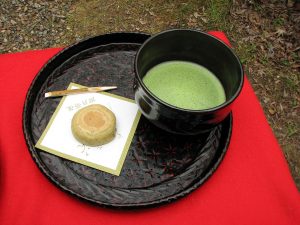By Heide Kennedy, Arizona Farm Bureau Communications Intern
If you frequent your local coffee shop, you’ve probably seen or ordered those creamy, light green drinks called matcha. Because of its touted health benefits and delightfully fresh flavor (my mom says it’s gross and tastes like grass but I beg to differ), it’s really gaining some popularity, and rightfully so. Read on for a little more insight into how matcha offers quite a bit of nutrition, and how you can make it at home. 
According to registered dietician-nutritionist Mia Syn, matcha is full of a particularly powerful antioxidant called catechinn epigallocatechin, which is known for helping to protect cells from being damaged by free radicals in the body. Besides just reducing inflammation, this also helps to slow aging and reduce the risk of other chronic diseases and cancer. Additionally, matcha is also known for lowering bad cholesterol, elevating good cholesterol, improving insulin sensitivity, regulating blood sugar, and flushing out toxins and heavy metals from the body.
Matcha also offers a nice, not too high but also not too low amount of caffeine. One cup of matcha has about 20-37 milligrams of caffeine, which puts it right above the caffeine content of regular green tea, but still lower than that of a cup of coffee. It’s perfect for when you want that little pick-me-up, without the crash that comes after consuming large amounts of caffeine at once.
So, how do you prepare your own matcha at home? One, you have the matcha powder, it’s pretty simple after that. Just measure out 1.5-2.5 teaspoons of matcha powder depending on how strong you’d like it. Then, whisk it vigorously into 4 ounces of warm water until it’s frothy. After that, the choice is yours. Drink it as is or add some more hot water or milk!
Give matcha a try sometime and shake up your normal coffee and tea routine! For more articles about coffee, tea, and the like, check out the Fill Your Plate blog!

